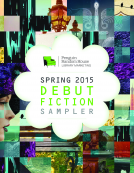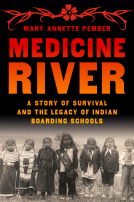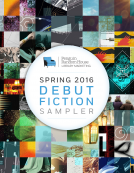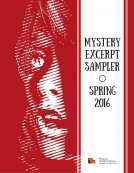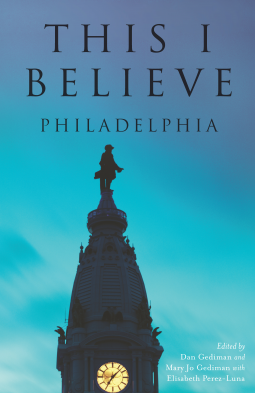
This I Believe
Philadelphia
by Edited by Dan Gediman and Mary Jo Gediman with Elisabeth Perez-Luna
This title was previously available on NetGalley and is now archived.
Send NetGalley books directly to your Kindle or Kindle app
1
To read on a Kindle or Kindle app, please add kindle@netgalley.com as an approved email address to receive files in your Amazon account. Click here for step-by-step instructions.
2
Also find your Kindle email address within your Amazon account, and enter it here.
Pub Date Oct 05 2015 | Archive Date Nov 30 2015
Description
This book features thirty essays from that original 1950s This I Believe radio series, including contributions from publisher and philanthropist Walter Annenberg, classicist and educator Edith Hamilton, anthropologist Margaret Mead, and Pulitzer-winning author James Michener.
Complementing those historical selections are thirty contemporary essays produced through a partnership among This I Believe, WHYY, and Leadership Philadelphia. These essayists include Philadelphia Inquirer columnist Frank Fitzpatrick, Grammy Award winner Kenny Gamble, Philadelphia Mural Arts Program executive director Jane Golden, and Mayor Michael Nutter.
Altogether, this collection is an insightful reflection of the guiding principles that drive the people of Philadelphia, who believe in brotherly love--and so much more.
Available Editions
| EDITION | Ebook |
| ISBN | 9781625856425 |
| PRICE | $12.99 (USD) |
Featured Reviews
 Christine E, Reviewer
Christine E, Reviewer
Disclaimer: I received an ARC via Netgalley. I also live in Philadelphia. Furthermore, I teach at the same college, same department, as one of the contributors.
Despite being in Philadelphia for all my life, I have never heard of this series until this popped up on Netgalley. The volume is a collection of short essays by various people from Philadelphia. By and large, the essays are meditative and reflective, usually looking at religion and community, or service and community. The contributors range from politicians (Mayor Nutter) to community activists/workers (Sister Mary Scullion) to the famous (Margaret Mead) to the everyday. Writers, teachers, artists, and religious men and women are included. The essay is divided into voices from the past – the Radio series – and current voices.
It is a rather beautiful collection.
There are also some surprises. I always forget about Edith Hamilton and her connection to the area, hardly surprising because her Mythology is taught in a quasi-vacuum, with little biographic information given. Hamilton’s essay in this volume, “Of Sonnets, Symphonies, and Socrates,” is about mercy, art, and truth of spirit. Perhaps it is too scholarly for some, but seen in light alongside her work on mythology it is a source of a meditation.
John B. Kelly Sr’s essay is no less well written, though it is far less scholarly. The father of Grace Kelly reflects on sports and faith. If you enjoyed the recent book, The Boys in the Boat, you might enjoy this. James Michener’s essay is about brotherhood and sameness. It is connected to the themes of some of his novels. It is nicely read alongside another essay from the volume, “The Anchor of Life” by Theodore Roosevelt III, a reflection on life and family.
The modern writers are no less poetic, though they are more direct in connection to community and service. They are also seemed more varied in terms of religious beliefs, race, and sexuality. There is a wonderful essay by Carmen Febo-San Miguel about race. Frank Fitzpatrick writers about what it means to be of Philadelphia, a city that is often forgotten about in the news, totally left out in the discussions about New York and Washington, DC. Kenneth (Kenny) Gamble’s essay about race and education is important, especially in light of recent books and such series as The Wire. This essay’s themes. It perhaps reaches the ultimate conclusion with Mayor Nutter’s essay about service told via his personal history. There are essays detailing works such as Philadelphia’s Women’s Way as well as the mural arts program.
The use of the two parts as well as the varied authors – rich, poor, white, black, Hispanic, straight, homosexual, teacher – gives an portrait of a city. A more accurate portrait of what it means to be part of that city’s fabric and one connects with those who share that space.
If you read the Oprah Winfrey magazine, and I guiltily admit to doing so on occasion, she has a section called "What I know for sure". Here she shares the tidbits of solid truths that she has learned through out her life. Things that don't change based on fashion nor on trend. Truths with a capital "T".
Interestingly enough, This I Believe started the trend of what are important and deep personal truths long before anyone had even heard of Ms. Winfrey, the queen of self examination and self affirmation.
This book is based on a project that took place on a radio show. The show asked Americans from all walks of life during the 1950s, what do you deep down and truly believe? The show was hosted by Edward R Murrow and had deep roots in Philadelphia.
What was fascinating about the book is that basic core beliefs do not seem to have altered in 60 years. What people value and what they hold close to their hearts in good times and bad reads like Ms. Winfrey's revelations about the same things.
This isn't to diminish the gravity of this book or the profound and life touching insights you will find. It is to emphasize that we are always searching, looking deep within, to find our way in life and to hold true to some core belief in being decent and being kind. In the 50s it was a wonderful radio show dedicated to finding common ground and in the new millennium it is in tibits and tweets found in the supermarket or online.
A lovely book. And because of the common thread, not a nostalgic look back, but a tapestry of what it is to be human that is universal.
